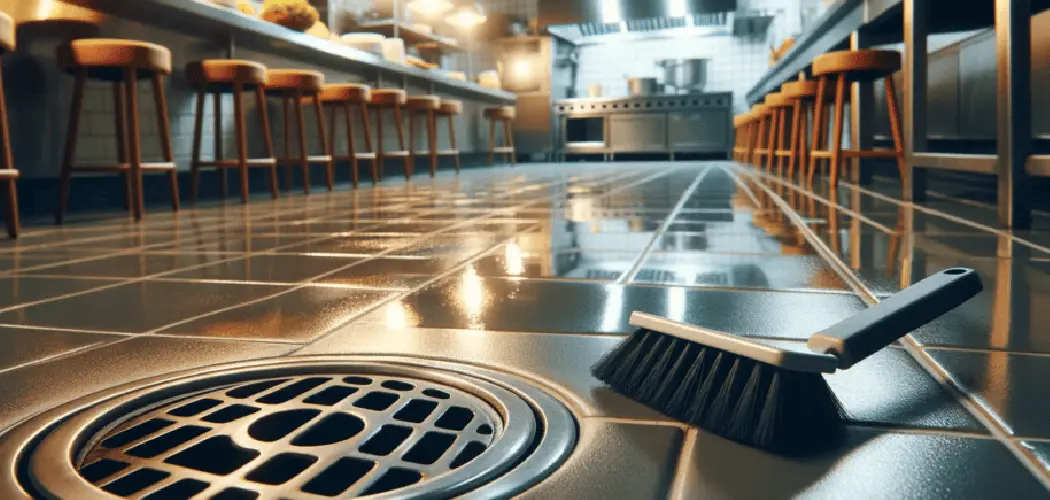Have you ever walked into a restaurant only to notice a pool of standing water around the floor drains? Are you a restaurant owner or chef frustrated by clogged floor drains? Dealing with this issue can be both time-consuming and costly, but luckily, there are various techniques you can use to ensure your drain is free-flowing once again.
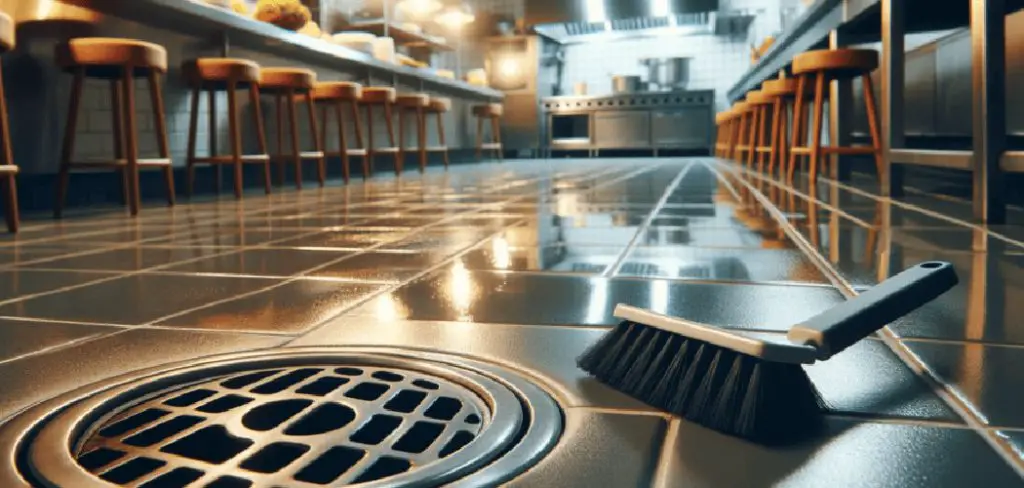
It’s an unpleasant experience that can quickly dampen your appetite and cast doubts on the cleanliness standards of the establishment. But don’t fret – unclogging a restaurant floor drain is easier than it looks! In this blog post, we will guide you through clearing these troublesome drains so that your favorite eateries are kept in pristine condition. Read on how to unclog a restaurant floor drain like a pro!
Necessary Items
Before you start unclogging your restaurant floor drain, make sure you have all the necessary items. Although some techniques require specific tools, most can be done using essential household items. These include:
- Plunger – a standard tool used for removing blockages by creating suction and pressure
- Snake or auger – a long flexible metal wire used to reach deeper clogs
- Baking soda and vinegar – a natural, chemical-free solution for breaking down organic material
- Boiling water – hot water can loosen up grease and debris stuck in the drain
10 Steps on How to Unclog a Restaurant Floor Drain
Step 1: Remove Any Visible Debris
Start by taking a good look at the drain. Use gloves to remove any significant bits of food, debris, or hair blocking the opening. This is especially important if you have a catch basin or strainer.
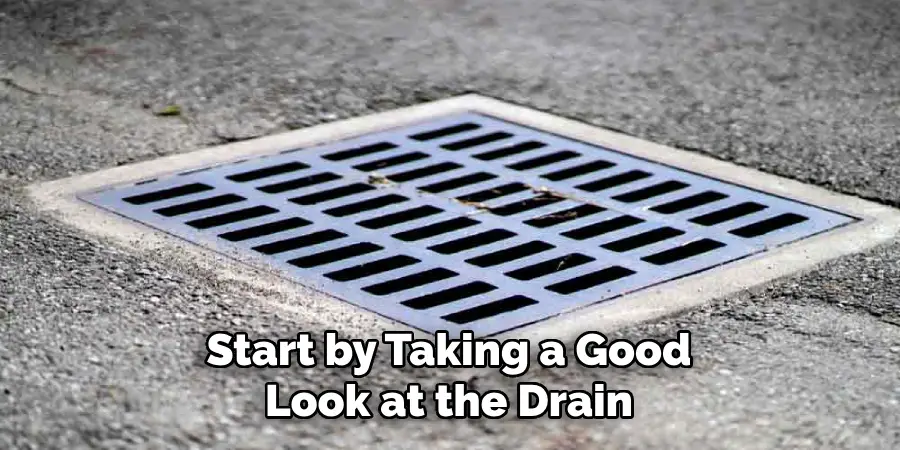
Step 2: Pour Boiling Water
If the water is still draining slowly after removing visible debris, pour boiling water down the drain. The hot water can help loosen up any grease or organic material that may be clogging the drain.
Step 3: Use a Plunger
If the boiling water doesn’t trick, try using a plunger. Ensure there is enough water in the sink or floor drain to cover the rubber part of the plunger. Position it over the opening and push it up and down vigorously for about 30 seconds. This should create suction that can loosen and break up the clog.
Step 4: Snake or Auger
If the plunger doesn’t work, it’s time to bring in the big guns – a snake or auger. These tools are specifically designed to break through tough clogs by using a long metal wire that can reach deep down into the drain. Follow the instructions carefully when using these tools to avoid causing any damage to your pipes.
Step 5: Baking Soda and Vinegar
For a more natural approach, try using baking soda and vinegar. Start by pouring one cup of baking soda down the drain, followed by one cup of vinegar. Let this mixture sit for about 15 minutes before flushing it with boiling water. The chemical reaction between the two ingredients can help break down and dissolve any organic material clogging the drain.
Step 6: Hot Water Flushing
After using previous techniques, flush the drain with hot water to remove any remaining debris or residue. This will also help clear out the pipes and ensure proper drainage.
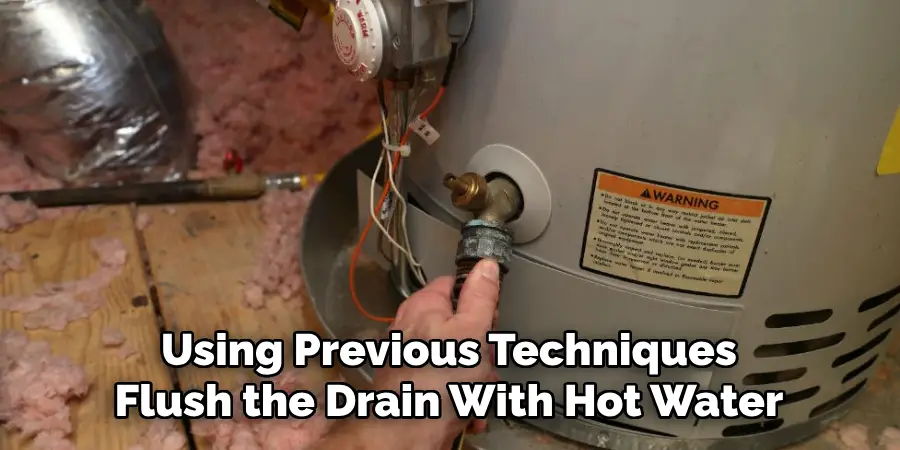
Step 7: Enzyme Drain Cleaner
If none of the previous methods work, you may need an enzyme-based drain cleaner. These cleaners contain enzymes that break down organic material in the drain without causing any damage to your pipes or the environment. Follow the instructions on the product carefully, and be sure to wear gloves and eye protection.
Step 8: Commercial Chemical Drain Cleaner
As a last resort, you can use a commercial chemical drain cleaner. However, these products contain harsh chemicals that can harm you and the environment. Use with caution and follow the instructions carefully.
Step 9: Hydro Jetting
If all else fails, it may be time to call a professional plumber for hydrojetting. This method uses high-pressure water to blast away even the toughest clogs. It’s essential to hire a licensed and experienced plumber for this technique to avoid damaging your pipes.
Step 10: Regular Maintenance
Prevention is always better than cure, so maintain your restaurant floor drains regularly. This includes using drain strainers or catch basins to prevent large debris from entering the drain, avoiding pouring grease, and regularly flushing with hot water.
Unclogging a restaurant floor drain can be messy and frustrating, but with these ten steps on how to open a restaurant floor drain, you’ll have your drains flowing freely in no time. Remember to use proper safety precautions and follow instructions carefully when using tools or chemicals.
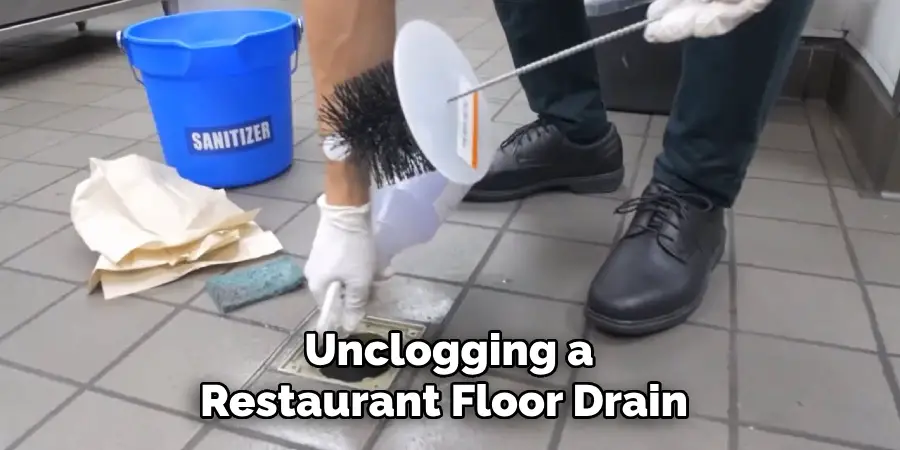
Regular maintenance is critical to avoiding future clogs, so incorporate it into your restaurant’s cleaning routine. Now, you can confidently enjoy your favorite restaurants without worrying about clogged drains! So, next time you encounter a clogged floor drain in a restaurant, don’t panic – just follow these steps and unclog it like a pro!
8 Care Tips for Maintaining Clean Drains
1. Keep a Drain Cover in Place
Using a drain cover can prevent larger debris from entering your restaurant floor drain, reducing the risk of clogs. Make sure to clean the cover regularly to remove any trapped debris.
2. Dispose of Grease Properly
Grease is one of the leading causes of clogged drains. Instead of pouring it down the drain, dispose of it in a separate container and dispose of it properly.
3. Regularly Flush with Hot Water
Flushing your drain with hot water can help prevent grease from building up in the pipes, as well as remove any small debris that may cause a clog. Make this a part of your daily or weekly cleaning routine.
4. Use Enzyme Drain Cleaners Regularly
Enzyme drain cleaners can be used as a preventative measure to break down any organic material that may be building up in your drains. Using it regularly can help avoid more severe clogs.
5. Avoid Chemical Drain Cleaners
Chemical drain cleaners contain harsh chemicals that can damage your pipes and the environment. Avoid using them unless necessary.
6. Regularly Check and Clean Catch Basins
If your restaurant has catch basins in place, make sure to regularly check and clean them to avoid any build-up of debris.
7. Properly Dispose of Food Scraps
Ensure all food scraps are disposed of properly and not washed down the drain. This can help prevent clogs and maintain clean drains.
8. Hire a Professional for Regular Maintenance
Hiring a professional plumber to inspect and maintain your restaurant floor drains can help catch any potential issues before they become more significant problems. Make this a part of your annual maintenance routine.
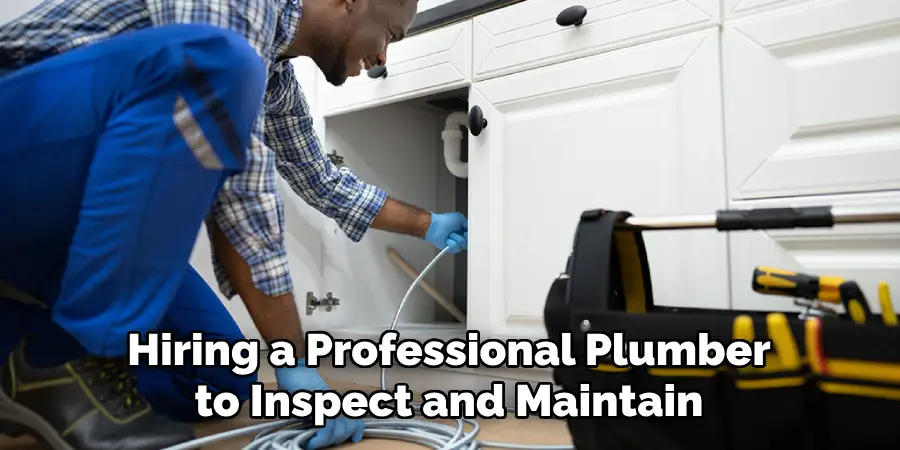
So, remember to follow these tips for maintaining clean drains in your restaurant! With proper care and maintenance, you can avoid clogs and keep your drains flowing smoothly. Now you have all the knowledge and tools to unclog and maintain your restaurant floor drains effectively – so go out there and tackle those pesky clogs like a pro!
Frequently Asked Questions
How Often Should I Unclog My Restaurant Floor Drains?
It’s best to maintain your drains to prevent clogs regularly, but if a clog does occur, it can be treated as needed.
What Should I Do If None of These Methods Work?
If the clog persists after trying all of these methods, it’s best to call a professional plumber for hydrojetting.
Are There Any Precautions I Should Take When Using Chemical Drain Cleaners?
Always follow the instructions carefully and wear protective gloves and eye gear when using chemical drain cleaners. It’s also important to properly dispose of any remaining product after use. So, take proper precautions when using any tools or chemicals for unclogging your drains! Safety should always be a priority.
Can I Use These Methods on Other Drains in My Restaurant?
Yes, these methods can be used on any drain in your restaurant, including sinks and toilets. Make sure to follow the instructions carefully for each specific type of drain. So there you have it – all the information and tips you need to unclog and maintain your restaurant floor drains effectively. Remember to keep them to prevent clogs regularly, and if a clog does occur, follow these steps to tackle them quickly and effectively. With this knowledge, you can confidently keep your restaurant drains clean and free-flowing.
Are Chemical Drain Cleaners Safe to Use?
Chemical drain cleaners can harm you and the environment and should only be used as a last resort. Always use proper safety precautions and follow instructions carefully when using these products. So, it’s best to avoid them unless necessary and opt for more eco-friendly methods like enzyme drain cleaners or hydrojetting. Keep your restaurant clean and your drains clear with these tips!
Conclusion
Restaurant floor drains are an important yet often overlooked aspect of maintaining a clean and hygienic restaurant. By following the steps on how to unclog a restaurant floor drain outlined in this guide, as well as incorporating regular maintenance into your cleaning routine, you can prevent clogs and keep your drains flowing smoothly.
Remember to take proper safety precautions when using tools and chemicals, and consider hiring a professional for regular maintenance. With these tips, you can confidently enjoy your favorite restaurants without worrying about clogged drains. So go ahead and put these tips into practice – your restaurant’s drains will thank you! Keep them clean, keep them flowing, and continue to provide a top-notch dining experience for your customers.

